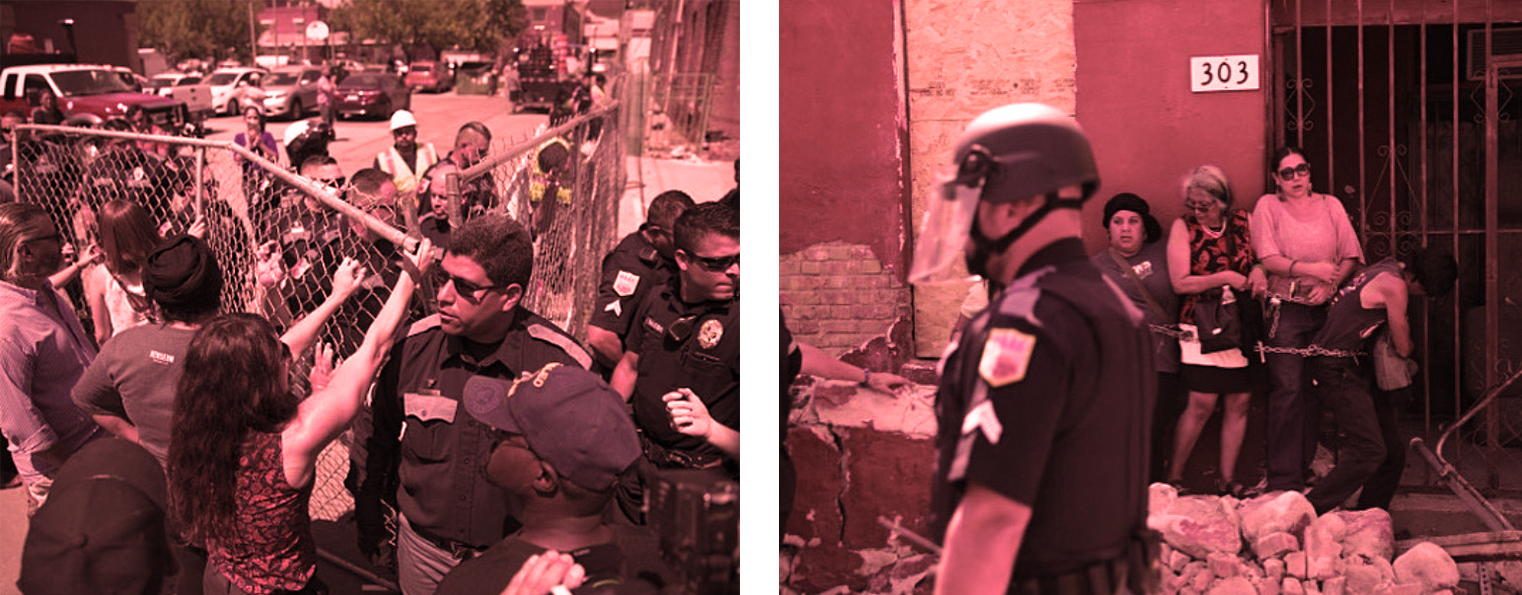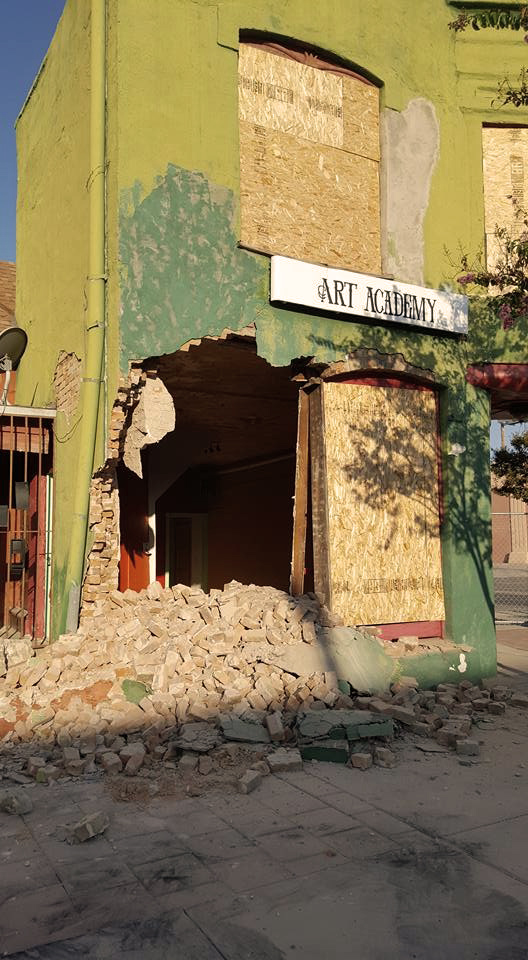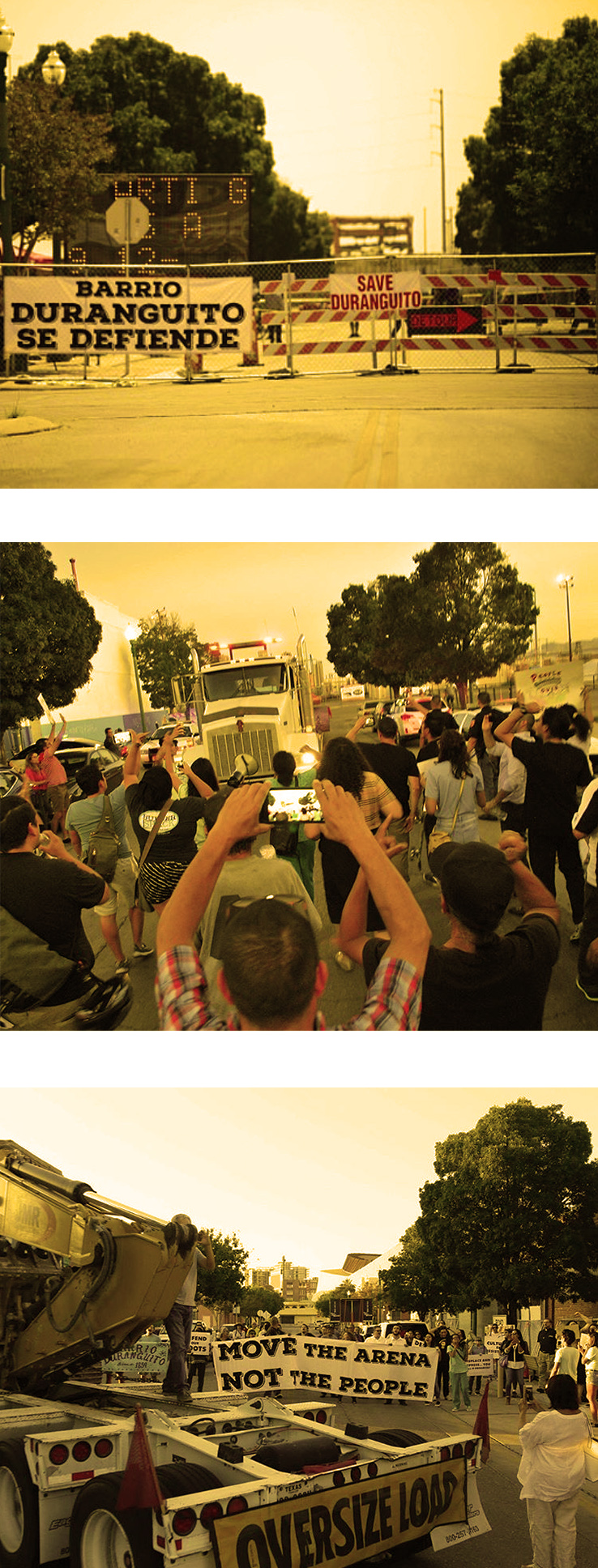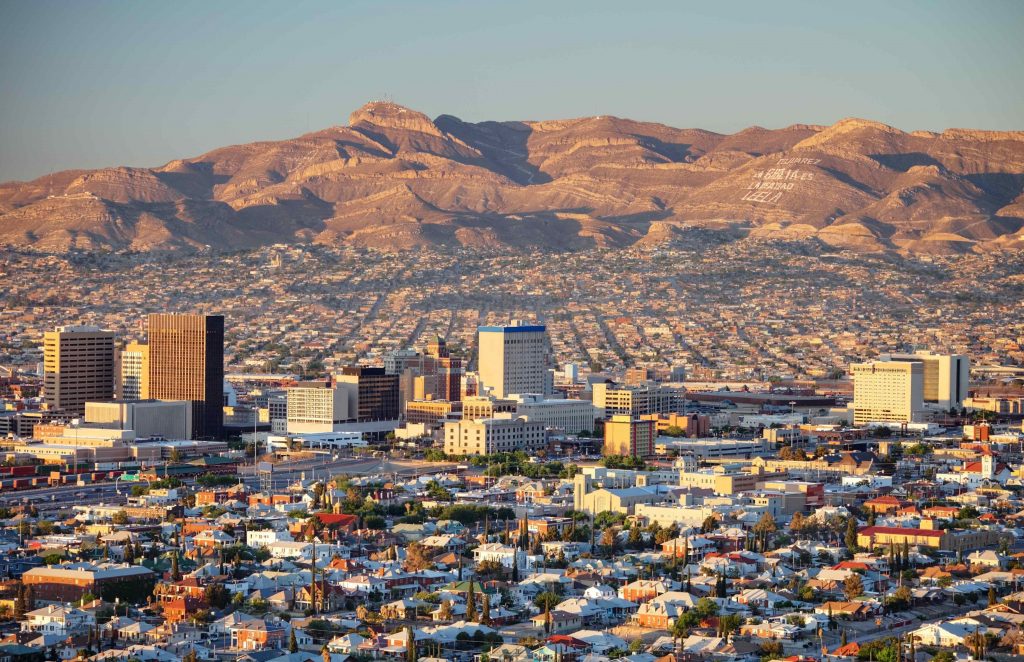On the evening of September 11, 2017, El Paso del Sur – an anti-gentrification activist group based in El Paso, Texas – saw its yearlong efforts come to fruition: The city granted a cease and desist order to protect the historic neighborhood of Durangito from being demolished to make way for a sports arena. This was no easy feat as the decision to halt demolition came after hours. Courts had initially postponed this ruling, leaving Duranguito vulnerable to immediate destruction. The neighborhood only escaped its fate because of after-hours litigation and immediate community response to the threatening bulldozers. That night, community activists celebrated a much-deserved victory.
But the very next day, El Paso del Sur woke up to every activist’s nightmare: Its hard work was being undone, or rather wrecked. Bulldozers punctured holes in several Duranguito buildings, rendering them unstable. The community quickly gathered to form chains around the entire neighborhood to protect it from construction workers commissioned by property owners to demolish Duranguito. Apparently, the cease and desist order filed by the city only protected the neighborhood from government demolition, not the actions of property owners. So what seemed unthinkable just a night before was now manifesting violently.

“It felt awful because the night before everyone was really happy,” noted Paso del Sur activist Jose Quintero, tells me, remembering the disappointment that set in that day. “It felt like we had finally caught a break. But now we were up watching elders being dragged off the streets as they protect the only neighborhood they’ve called home.”
To understand the passionate fight to maintain Duranguito, one must understand its historical and contemporary context. Duranguito is El Paso’s first neighborhood, founded primarily by people of Mexican descent; the neighborhood has the added cultural significance of being Pancho Villa’s stash house during the Mexican Revolution. Today, it’s the site of many low-income housing communities and is home to various community elders.
“It felt like we had finally caught a break. But now we were up watching elders being dragged off the streets.”
However, Duranguito has seen its population diminish little by little due to city and landowner intimidation. Cassandra Alicia, an organizer for Paso del Sur, recounts how one older woman went from having a reliable support network within her very apartment complex to standing alone, as the rest of the inhabitants left due to rent increases and landowner coercion. Further cementing its place as a hub for the Latino community, Duranguito also hosts a pulga, a weekly bazaar that serves as the only space where many local and independent vendors can conduct business.
Due to this neighborhood’s storied life, it’s also impossible to say that it has only recently come under attack. Citlalic Ocelomaitl, member of Paso del Sur, recalls elders fighting to preserve Duranguito as far back as 2002. Fifteen years ago, they sat out in front of bulldozers to save their neighborhood. Since then, Ocelomaitl notes that the city of El Paso has neglected the neighborhood.
“The city has been tactical about ignoring the much-needed maintenance of Duranguito, so that’s why you see abandoned buildings,” Ocelomaitl says. “They couldn’t get their way in 2002, so they’ve gone by other means to convince people that this neighborhood isn’t worth saving and that building an arena in its place would prove a financial benefit to El Paso. However the city fails to mention that whatever economic boost El Paso experiences will only be temporary since the jobs promised by the proposed arena will only be seasonal.”
Still, many of El Paso’s residents disagree with Duranguito’s historical merits because they view the pending arena as progress. Given that almost 80 percent of El Paso residents are Latinx, it raises the question of what progress entails. For some, like Cassandra, resident complicity with Duranguito’s demolition signals Latinx/Chicanx strive for assimilation.

“When our elected officials have been primarily white, despite the overwhelmingly Latinx population, people internalize that whiteness is power and that it’s something worth aspiring to,” Cassandra says. “This leads to having assimilative politics and to us willingly giving up such an important part of Mexican-American history.”
But city officials don’t always have citizen interest in mind. Many community members who voted on the measure to build the arena in 2012 claim they didn’t know it would come at the cost of Duranguito. The city, on the other hand, claims that the detail was specified in a follow up page on the ballot. Ocelomaitl notes that this lack of transparency is standard practice for city officials.
“People should pay attention because every city has a Duranguito.”
“Cities make plans with private investors and promote the interests of private entities under the farce that it will create economic progress for everyone without consulting the community,”Ocelomaitl adds. “But this progress needs to be defined by the community impacted and by those that should benefit, which are those that are economically marginalized. Progress needs to be a question that’s answered by the community, not something that’s influenced by city officials.”
For nearly two weeks, community members have camped out in front of the damaged Duranguito buildings. Fearing the property owners will begin demolition at any given moment, they have refused to leave. Many community members claim that it is in the property owners’ best interests to pay the fine for disobeying the cease and desist order so that they can sell the land to the city of El Paso as soon as possible and thus commence the construction of the proposed arena. Quintero notes the city’s complicity in this. “The city officials are trying to absolve themselves from any destruction caused by Duranguito property owners, but we know that it is in the interest of the city and their private investors that property owners demolish this site to sell the land to El Paso.”

With everything working against them, saving this community might appear as a grim effort. However, Paso del Sur remains hopeful and active in its efforts. “Duranguito is El Paso’s first neighborhood; it’s our spirit,” Quintero says. “It’s where we are building a movement to protect all Southside communities that will find themselves under attack because gentrification won’t just stop here. We must continue fighting.”
“Duranguito is El Paso’s first neighborhood; it’s our spirit.”
Ocelomaitl adds that it’s not just about protecting Duranguito, but getting it the protections and recognitions it deserves. “We won’t give up until Duranguito is transformed into a community trust for low-income or fixed-income families, elders, and transitional homes,” she says. “We won’t give up until the city marks Duranguito as an official Historical site and grants it every protection therein. We won’t give up.”
In the more than two weeks since the initial demolition and the activists’ fight for the neighborhood, Duranguito has mainly received negative local coverage. Missing is the wide media attention that an illegal demolition of a historic neighborhood warrants. Part of that is due to the relatively small size of the community affected; another part might be attributed to a growing desensitization to the threat of gentrification. After all, countless communities of color find themselves under attack.
But as Cassandra states, this fight is important to all of us, regardless of whether they have ties to Duranguito. “People should pay attention because every city has a Duranguito; what’s happening to us will happen to them. Maybe their version doesn’t have historical significance, maybe their city isn’t central, but every city has a neighborhood where people are being attacked by their own city officials and they need people to stand with and for them.”
Editor’s Note: The writer of this piece and activist Cassandra Alicia are friends and host a podcast together.







